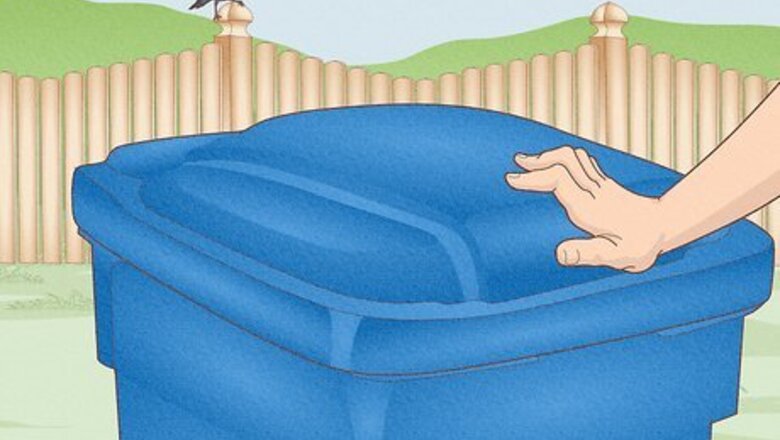
views
X
Research source
Creating an Unfavorable Space

Store trash securely where it cannot be accessed by crows. Crows can easily rip into a plastic trash bag to start rummaging through your trash. Make sure your container is not overfilled as crows can get into the trash if a small part of the bag is showing. Look to get a container that has a locked lid. Once a crow finds a source of food, it will be back daily to forage, so it is important to always keep trash completely secure. Cover and lock all trashcans. Secure the handles to stakes stuck in the ground to prevent bins from being knocked over.
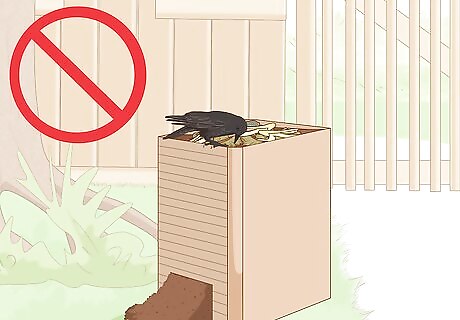
Cover and contain all compost. Crows are omnivores and will eat any food scraps they happen upon. It is important to make sure all food scraps are securely contained. Composting is a great sustainable way to get rid of leftover food, however open compost is very inviting to a crow. To compost food without attracting crows, make sure you cover your compost or keep it contained in a bin. You can compost yard waste without attracting crows.
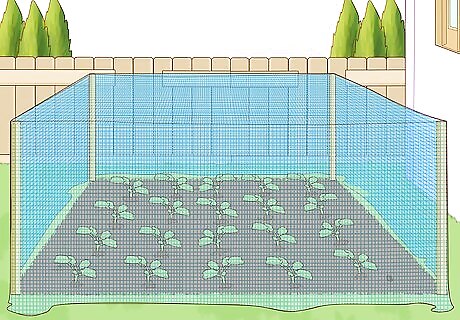
Protect your garden. Although crows can be beneficial to gardens because they eat insects and grubs, sometimes they will help themselves to your crops as well. Place a flexible bird net over your crops purchased from your local garden or hardware store. A four inch net will keep the crows out but still give smaller birds access to the insects in your garden. Before your fruit starts to ripen, drape the net on the crops or suspend it above the crops with a frame built around the garden. Make sure the net is secure to ensure it will keep the crows out. You can also put this netting over fruit trees and bushes.
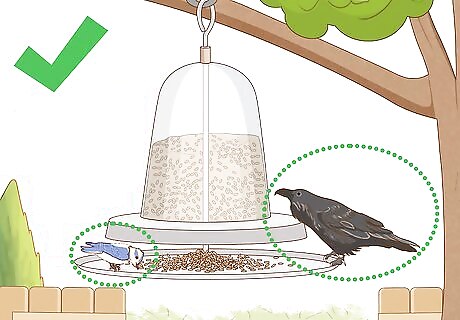
Use bird feeders that exclude large birds. Invest in a bird feeder that automatically closes when birds of larger weights try to feed. You might also try using a feeder with a wire mesh that excludes crows but lets smaller birds in. Clean up any spillage each day to prevent crows from foraging around the feeder.

Install crow-proof nest boxes. Crows will sometimes eat the hatchlings of other, smaller birds. If a crow finds a nest box that it can get a hatchling out of, it will return every year to do the same. Make sure all of your nest boxes are over 6 inches (15.2 cm) deep from the hole to the bottom of the box. Remove the perch or ledge under the hole of a nest box so that the crow doesn’t have a place to stand and wait for a hatchling to poke its head out.
Eliminating Nesting Areas
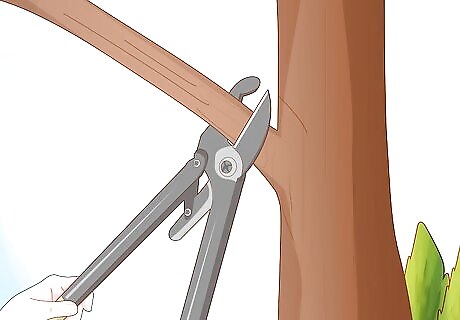
Trim dead branches from trees. Crows gather in groups and will look for open spaces to roost. Removing dead branches prevents large numbers of crows from converging on the leafless branch.
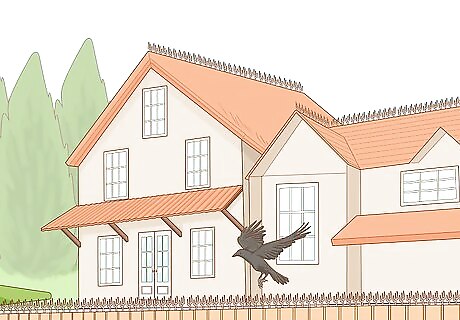
Install bird spikes on roof lines or fences. Bird spikes come in strips or bunches and can be easily installed as a permanent way to deter birds from landing. Bird spikes remove areas where crows can land by preventing them from being able to find footing.
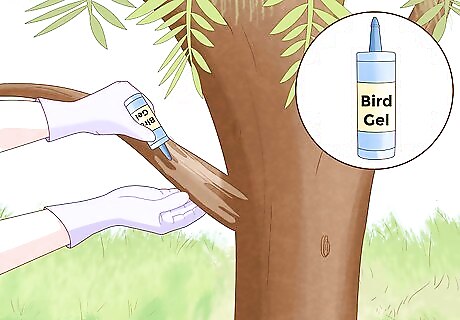
Use transparent bird gel on branches and other roosting areas. You can purchase bird gels from a local hardware store or online. Bird gel is a non-toxic sticky substance that does not disrupt the natural look of windows or trees like bird spikes. The sticky gel makes the surface uncomfortable to crows and will prevent the from establishing your yard as a nesting site.
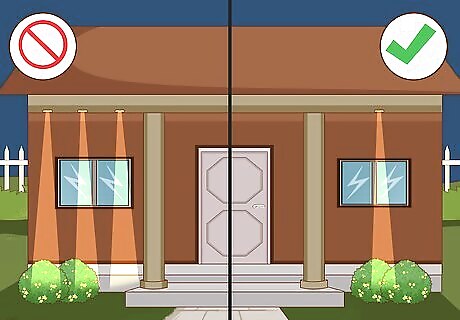
Reduce outdoor lighting. Crows tend to congregate in well lit areas at night. Reducing your outdoor lighting will help make your space less attractive to crows.

Address the arriving crows early in the winter. Crows are migratory birds and typically choose roosting grounds in early winter. Disrupt their habits by addressing the birds as soon as they arrive so they don't take up residence with you all winter.
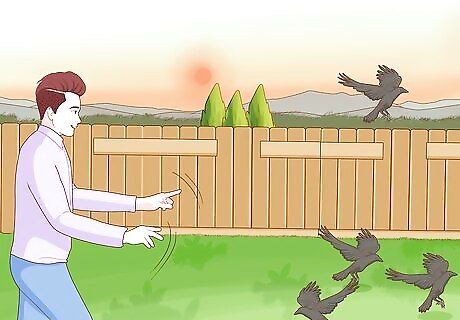
Disrupt the crows right before dusk. Scaring crows away in the evening helps prevent them from spending the night in your yard. A crow will look for a safe place to spend the evening, and by scaring them right before it gets dark, they are likely to look elsewhere.
Scaring Away Crows

Use fake animals to deter crows. String fake crows from a Halloween store upside down with their wings out. Crows will avoid the fake dead crows. You can try using fake horned owls or snakes, but these will only deter the crows for a short while. Crows will even learn the patterns of animatronic animals and recognize that they aren’t real eventually.
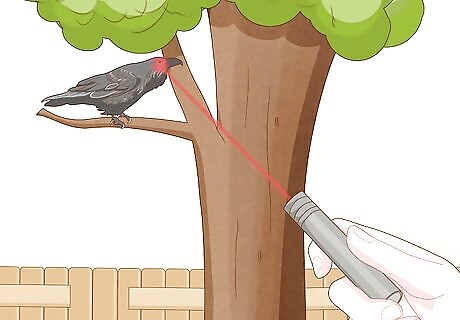
Shine a laser beam at the crows. Laser lights can disturb crows from their roosts temporarily; however, the crows may return a short time later. It is thought that after continuous harassment, the crows will eventually avoid the area all together.
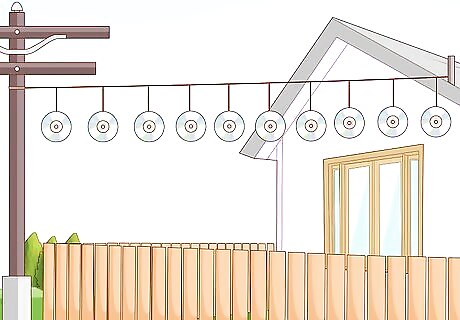
Scare crows away with reflective objects around your property. Crows can be frightened by moving shiny objects. You can find bird tape that is designed as a visual deterrent to crows. Hang shiny streamers on poles throughout your yard, or make a fence around your property by twisting the tape together and stringing it between poles along the perimeter. Move the location of your streamers periodically to keep the crows from overcoming them as a threat. Other reflective ideas to try: Reflective tape Old CDs hung vertically on a string. Aluminum pie pans. Adding anything shiny to your yard will help to deter the crows.
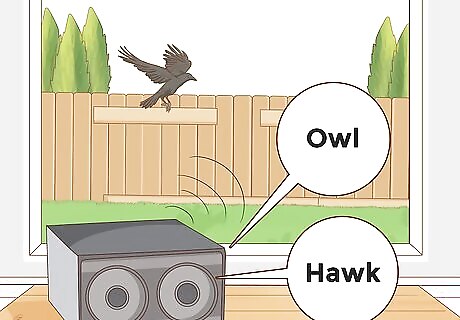
Use loud noises to frighten crows away. Crows do not like loud sounds such as explosions, loud banging, and alarms; these options, however effective, may be impractical for people in urban settings. Each time you see the crows, make the noise to train them to stay away. Playing a recorded audio of crow predators or crow distress calls can also help keep them away. You can find audio of crow sound deterrents available online at bird control companies. Try these noisemakers to keep the crows away: Firecrackers Recordings of crow distress calls Recordings of crow predators such as owls and hawks Air horns














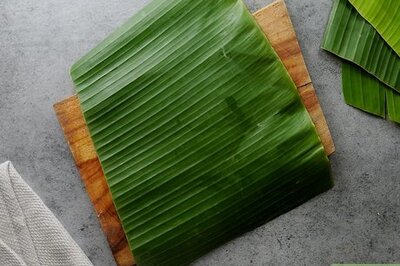
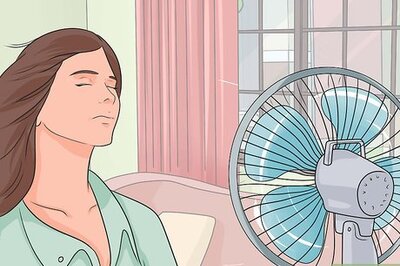




Comments
0 comment